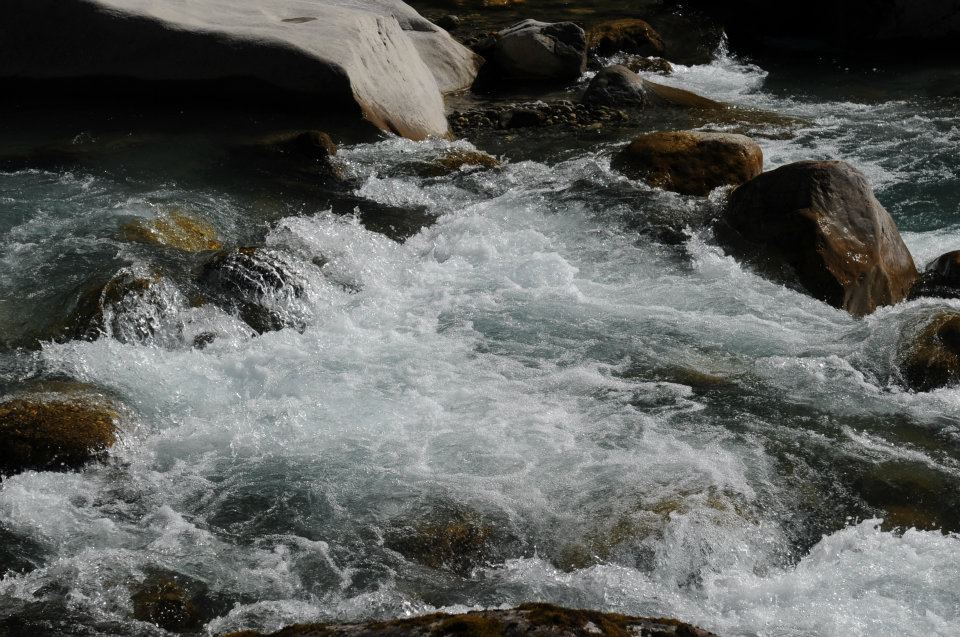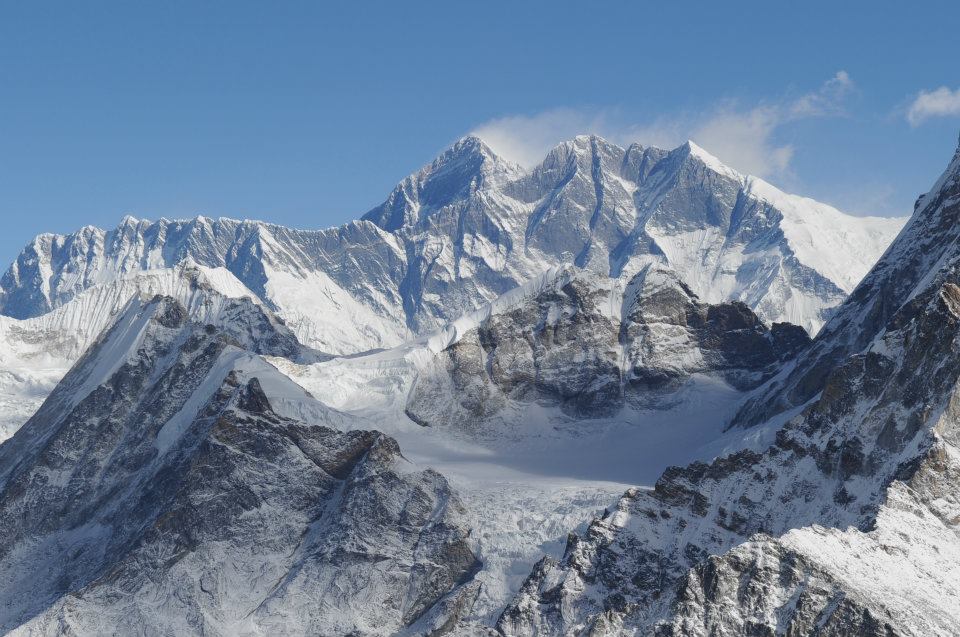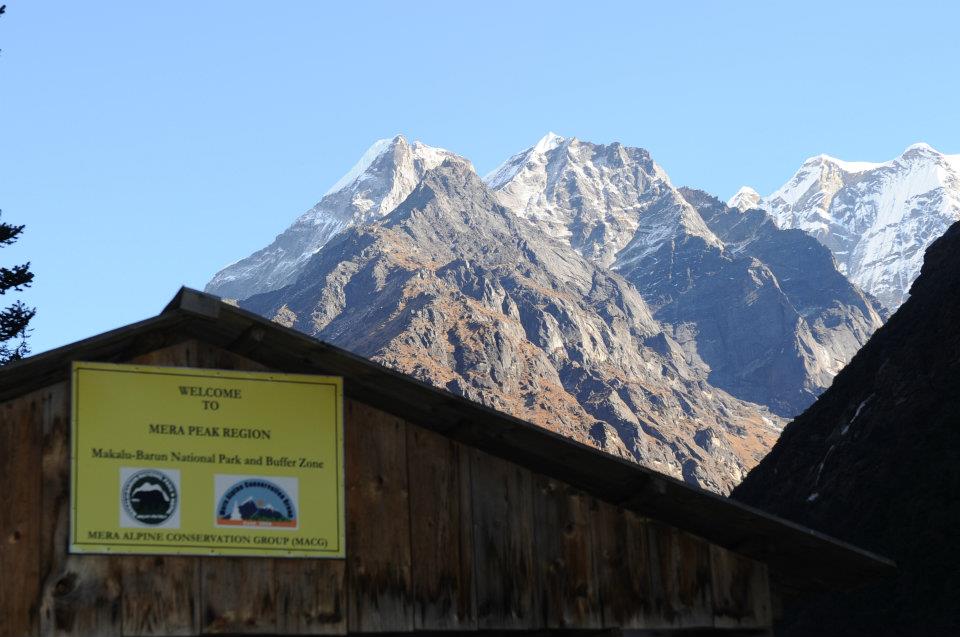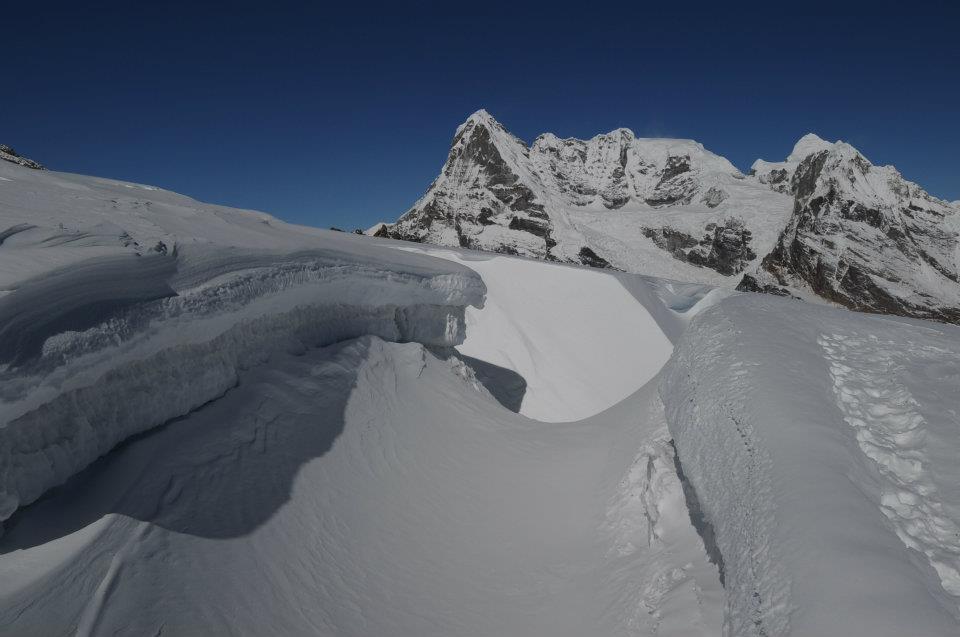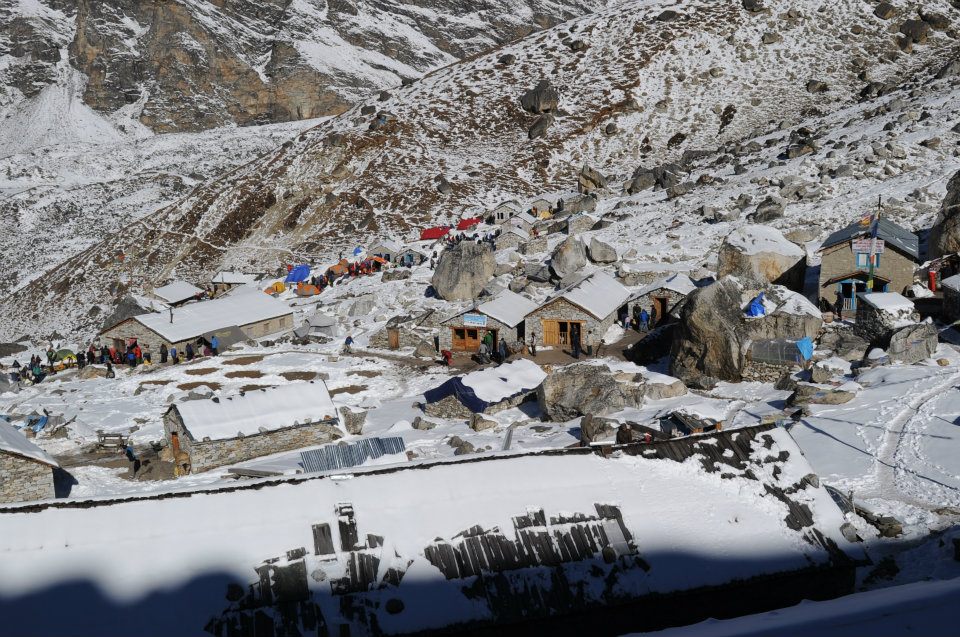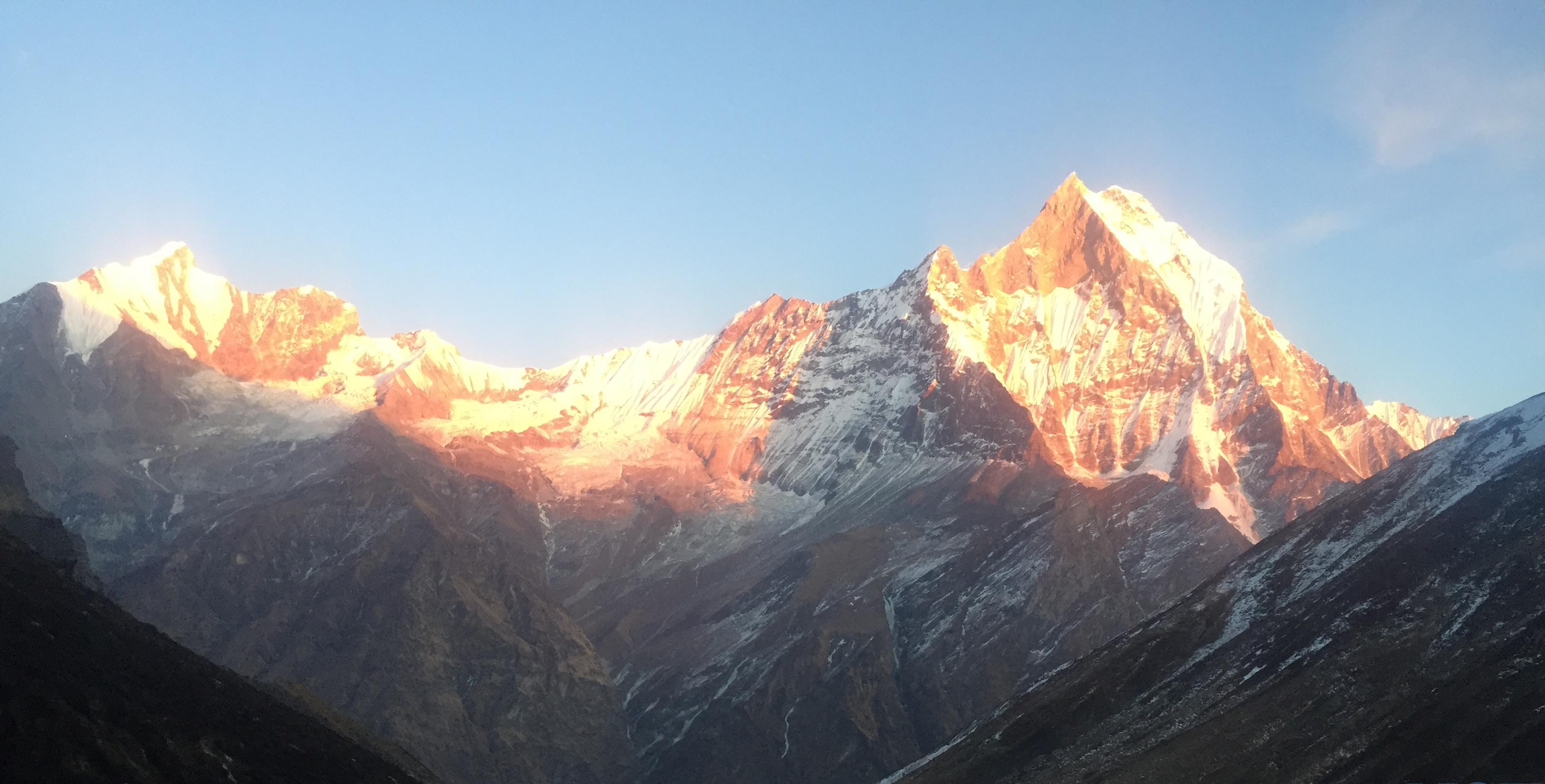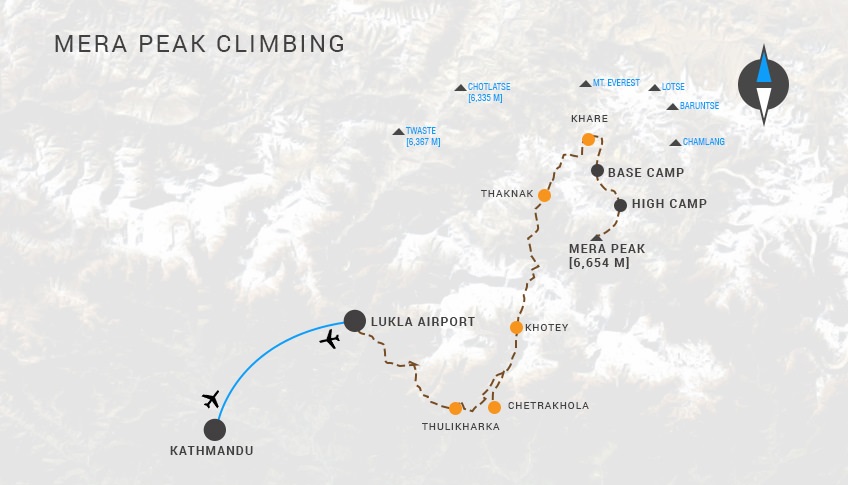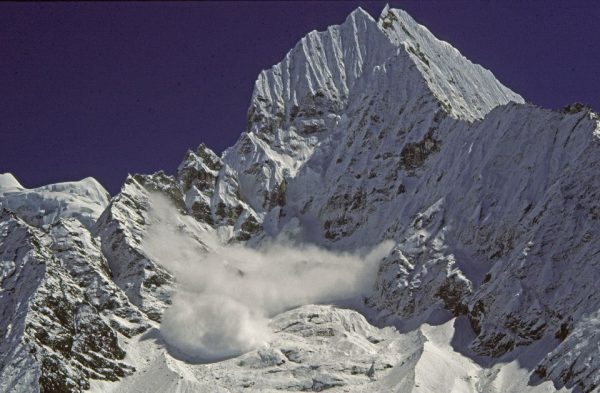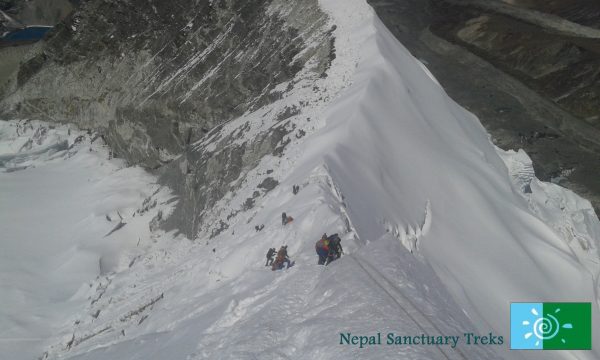Mera Peak (6,461m/21,190 ft) is the highest trekking peak in Nepal. The mountain is in the Mahalangur section, Barun sub-section of the Himalaya and located in Nepal’s Sagarmatha Zone, Solukhumbhu District.
It is an adventurous peak surrounded by snowcapped Himalayan range, and the scenic views including the world’s 8000-meter peaks: Mount Everest, Lhotse, Cho Oyu, Makalu, and Kangchenjunga.
Mera Peaks has three summits: Mera North, 6,476 meters (21,247 ft); Mera Central, 6,461 meters (21,198 ft); and Mera South, 6,065 meters (19,898 ft) as well as a smaller trekking summit which is visible from the south of Nepal.
Passing through the beautiful village and communities give the glimpse of the rich culture of the locals. The route from the north involves the high altitude glacier walking.
And the west and south route is more difficult. Thus you must use the technical climbing.
The trekking to Mera Park is technically straightforward ascents for experienced trekkers. That’s why Mera Peak is a very popular destination for trekking.
Thus, the climbers are suggested to take fitness and altitude training before going for trekking.
Mera Peak Trekking
The trekking starts from the Kathmandu airport to Lukla with the great views all the way and the hair-raising landing at the Lukla’s short runway.
Whoever wants to go there need to be physically fit and take the trip preparation class.
The journey to Mera peak is very interesting, and it is the best peak for those who love the technical climbing and has previous experience.
Fly to Lukla from Kathmandu, takes 25-30 minutes. After arriving there, you will trek to Paiya (Chutok) which takes 4-5 hours walk through the beautiful village, and the forest area then trek continues to Pangkongma.
After crossing Khare Khola, the trail goes uphill to Pangkongma for 5-6 hours walk. Then you will walk through the rhododendron and bamboo forest towards Pangkongma La from where the view of Mera peak is unbelievable.
And then you will trek downhill through pine forest to cross the Hinku river and arrive Nashing Dingma almost 5-6 hours.
Again trek from Chalem Kharka up to Chunbu Kharka requires for 5-6 hours walk. Then you will Walk for 5- 5.30 hours through the Hinku Valley and green forest with a downhill trail that takes you to Kothe.
From Kothe, it takes About 4-5 hours walk to Tangnang and 4.30 hours more to Khare. The further trail of about 4-5 hours takes you to Mera Base Camp where the trekkers take rest.
And the next day you will climb up to High Camp which requires 3-4 hours. You will rest there on that day. Then you will walk up towards Summit which is the most challenging part for trekkers.
Next, you will walk through the snow to summit continuously for 8-9 hours to the final destination to Mera Peak Summit.
After arriving there, you can explore the spectacular view of the world’s highest Mount Everest, and other mountains such as Lhotse, Cho Oyu, and others beautiful mountains ranges.
Similarly, while Returning, the trek starts from the base camp to Khote which takes about 3-4 hours and then trek from Khote to Thuli Kharka through the rhododendron forest which takes almost 5-6 hours.
And, to get back to Lukla you will walk for 6-7 hours. You will reach the place from where your trek had started. Take the flight to Kathmandu from Lukla.
Best time to visit Mera Peak
To climb Mera first, you need to know about the weather. The instability of weather makes climbing very dangerous. The best time to climb during the spring and autumn seasons, from September to December and February to June.
That time the weather is stable for a long period, and the temperature is also stable. Clear view of the mountain ranges and enjoy the scenario of the natural beauty.
Mera Peak is one of famous trekking site for trekkers. Foreigners come to Nepal to trek to the Himalayan region to see the highest peak of the mountain.
Before traveling, they have to pay an entry fee to Nepal Mountaineering Association (NMA) and take trekking permit.
TIMS (Trekkers Information Management System) must be obtained by every trekker and must have the TIMS cards.
TIMS cards help to know about the trekker their condition, and if they need the rescue, then it helps them.
Things you must have
The weather of the mountains can change suddenly. The weather in Himalaya is the combination of the extreme heat and cold in a single day.
As per your traveling period, you need to take the needed equipment with you.
Warm hat, Sunhat, sunglasses, pairs of hiking boots, headlights, waterproof duffle bag, sleeping bag, trekking poles, a pair of gloves, socks, warm clothes like long sleeves-shirt, down jackets, trousers, medicine including helmet, ice axe, crampons and others climbing equipment.
Facts of Mera Peak
- Mera Peak is the highest trekking peak of Nepal at 6,576 meters.
- Excellent walk through Sherpa Village and Communities.
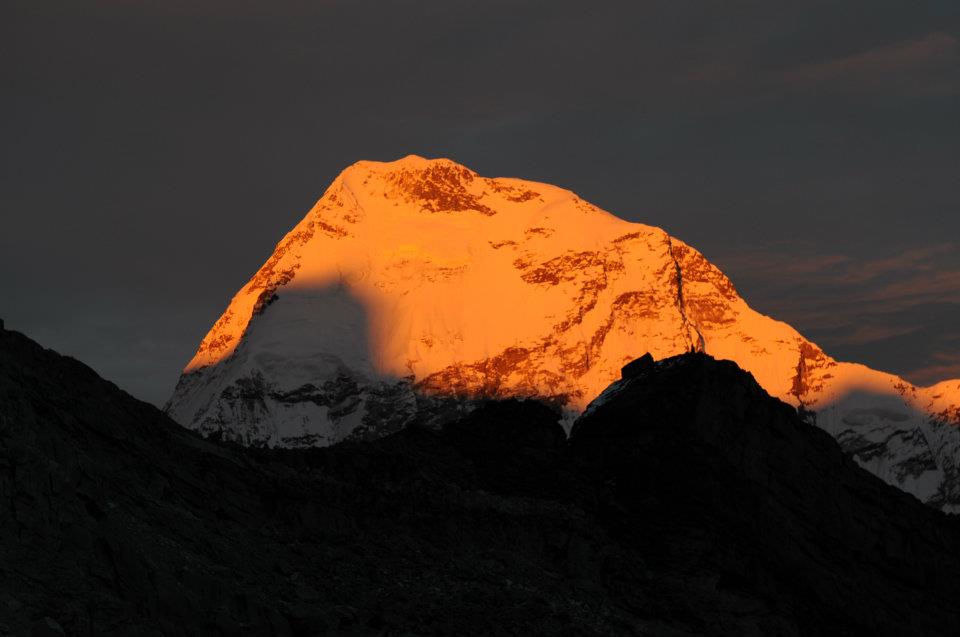
- It provides a Magnificent view of the highest peaks including the Himalayas with five; Mount Everest(8848m), Cho Oyu (8201m), Lhotse (8516m), Makalu (8463m), and Kangchenjunga (8,586m) and others mountains too.
- It Consists of many old Buddhist Gompas and Monasteries including Tyangboche.
- Jimmy Roberts and Sen Tenzing is the first successful ascent who climbed Mera Peak on 20 May 1953.
- The walk through the pristine bamboo and rhododendron jungle make the trekking more interesting.
How hard is Mera Peak?
Mera Peak is the challenging high altitude trek with the Himalayas glacier. Mera Peak trekking is straightforward and needs technical skill to climb.
For the non-experienced trekkers; it is not a right choice. Although trekkers have basic needs for the crampons, rope, and ice axe, a lot of skills are required to climb the mountain.
Trekkers require the high level of fitness because of the altitude.

